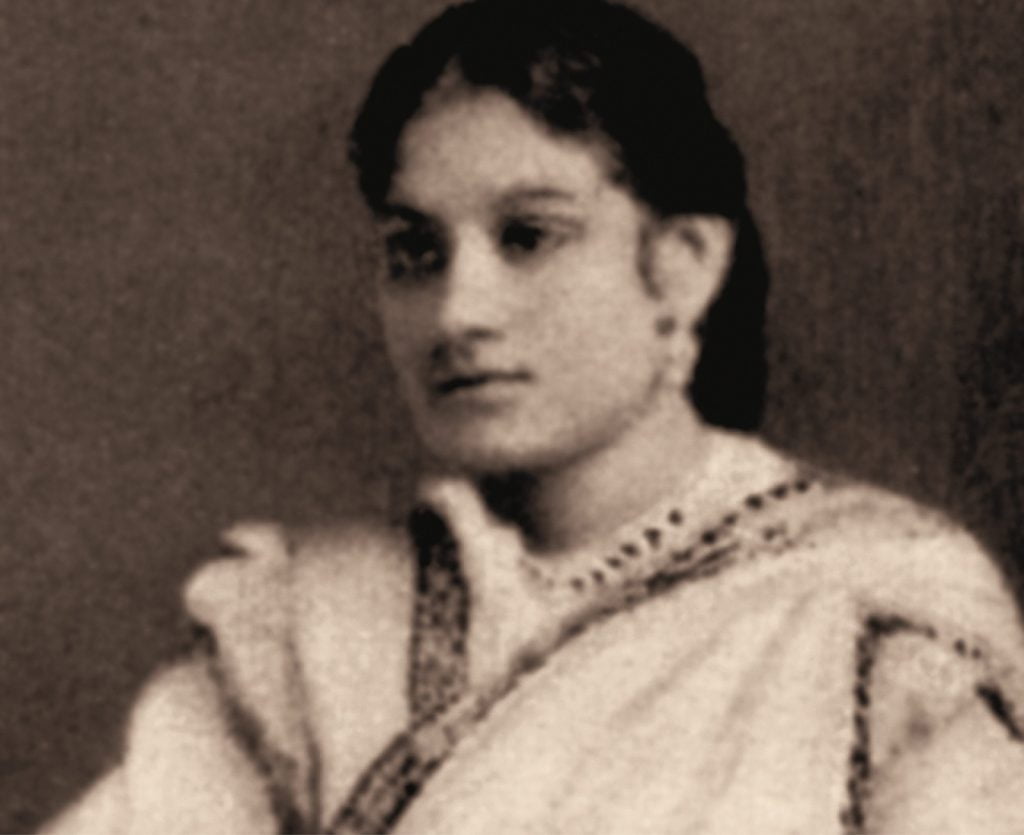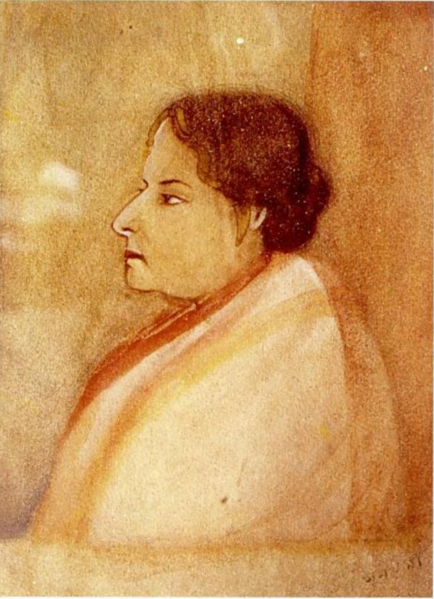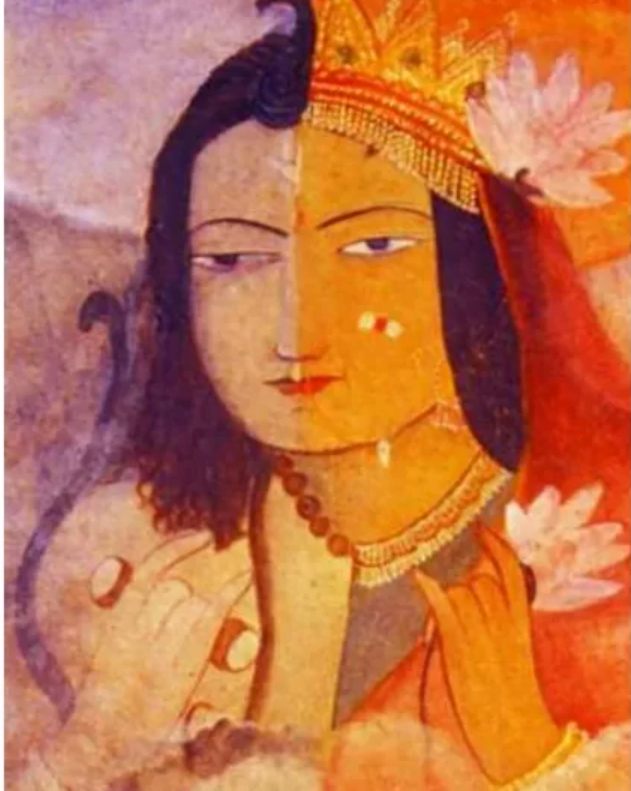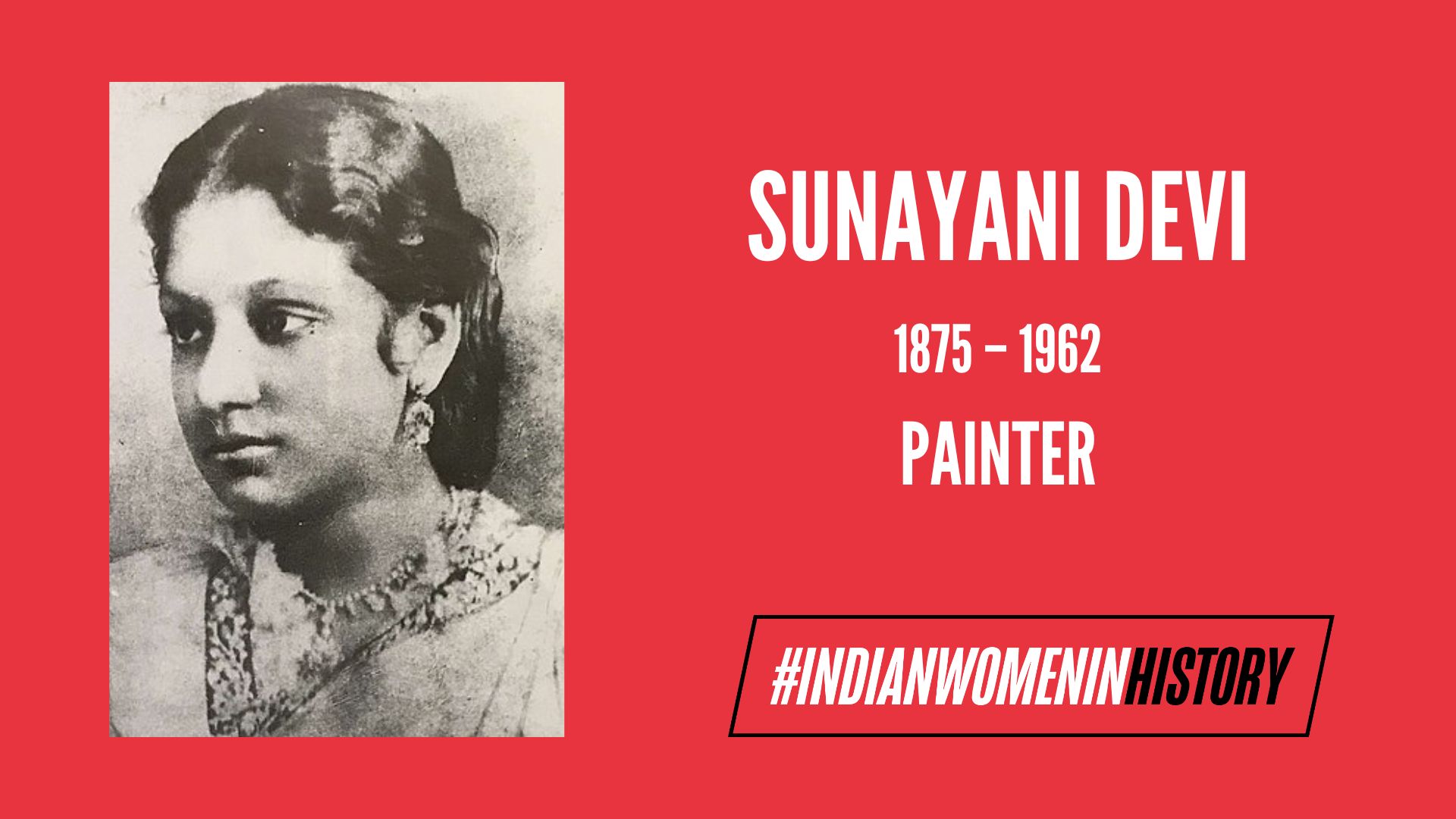Sunayani Devi, a relatively unknown figure until recently, has emerged as a prominent female painter from the Bengal Renaissance era. She was not just a painter, but a true source of inspiration for the modern Indian art scene. Born into the influential Tagore family in 1875 in Calcutta, her upbringing was immersed in a world of creativity and intellect. Her family included notable figures such as Nobel laureate Rabindranath Tagore, as well as her accomplished brothers, Abanindranath and Gaganendranath Tagore, who were celebrated painters. From a young age, Sunayani Devi found herself captivated by the devotional artwork adorning her aunt’s room.
The inspiration
The Ravi Varma prints, Rajput miniatures, and Bengal’s folk paintings held a special allure for her. She developed her artistic skills through clandestine observations of her brothers’ experimentation with various painting styles, ultimately becoming a master artist without any formal training.

Besides her artistic upbringing, she was greatly influenced by the Bengal Renaissance, a vibrant cultural and intellectual movement that engulfed Bengal during the 19th century. Her exposure to progressive ideas and artistic innovations of the time likely had a significant impact on the development of her unique style that emerged later in life.
Her native and natural style
Sunayani Devi’s unique modernist style is marked by a sense of spontaneity, flowing lyrical lines, naturalness, freedom, simplicity, and vibrant colours, reminiscent of the captivating essence found in primitive art. Her artwork showcases a beautiful blend of flowing lyrical lines complemented by the subtle and delicate hues created through her skilful use of watercolour washes. Sunayani Devi’s paintings frequently captured the essence of Indian culture, showcasing scenes from the Krishna Lila, Ramayana, and Mahabharata.

Sunayani Devi’s paintings are a direct reflection of her inner essence, serving as a powerful outlet for her creativity. According to art historian Stella Kramrisch, her artistic creations were a result of her intuitive approach, as she believed in letting her instincts take the lead.
Sunayani Devi’s paintings were revolutionary in capturing the essence of the “female gaze” in Indian art, offering a unique perspective on the domestic life and contemplative emotions of Indian women. This challenged the dominant perspective in art during that period. Her works displayed a distinctive style of traditional art known as “Indian artistic anatomy,” featuring elongated eyes and eyebrows that added a touch of divinity and regality to her subjects.
A unique talent
Sunayani Devi’s artistic prowess was evident through the numerous acclaimed works she created during her lifetime. While she may not have had a single most famous painting, her talent shone through in multiple pieces. In the 1920s, an intriguing portrayal of the Hindu deity Shiva emerged – Ardhanarisvar. This rendition depicted Shiva as an androgynous figure, embodying both male and female qualities. Three of her famous paintings that showcased her unique style, which drew inspiration from Indian epics and folk themes are the Milkmaids, The Candy Man, and Krishna Consorting Radha in a Guise of a Gopi.

Her other paintings like “Radha,” “Village Maid,” “The Votress,” and “Mother,” were truly revolutionary. Through her art, she captured the intimate moments and contemplative emotions of Indian women, giving voice to the “female gaze” in Indian art like never before. Her paintings gained widespread recognition both in India and internationally Sunayani Devi’s artistic creations garnered praise from European modernists for their captivating portrayal of women with mesmerising eyes, vibrant colours, imposing figures, and a flat technique reminiscent of frescoes. They were exhibited alongside avant-garde European artists during the 1920s. This allowed her to gain international recognition and share the stage with avant-garde European artists. This experience proved to be extremely valuable for a female artist at that time.
Sunayani Devi’s groundbreaking modernist works were highly sought after by prestigious institutions such as the National Gallery of Modern Art and the Indian Museum. These institutions recognised the importance of her art and played a crucial role in preserving her legacy as a prominent Indian artist of the early 20th century. She gained widespread recognition for her unique artistic style, which was influenced by Indian epics, folk themes, and her intuitive approach.
Sunayani Devi’s distinctive artistic style and choice of themes established her as a prominent Indian artist in the early 20th century, successfully bridging the gap between folk art and mainstream culture.
About the author(s)
Insha Qayoom Shah is a Research Scholar from the Department of English, University of Kashmir pursuing her PhD on Female Revisionary Mythmaking: A Study of Select Novels. The areas of her interest include Feminism, Mythology and the Revisionary literature. She has presented four papers in different national and international conferences. She has also contributed chapters in three books dealing with the feminism and gender studies.






